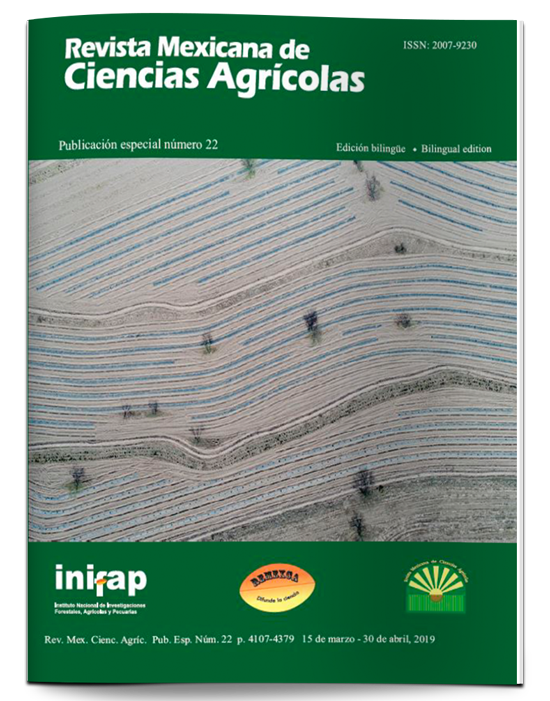Effect of entomopathogenic nematodes on nymphs of Aeneolamia albofasciata and its persistence in sugarcane soils of Veracruz
DOI:
https://doi.org/10.29312/remexca.v0i22.1863Keywords:
entomopathogenic nematodes, spittlebug, sugarcaneAbstract
The objective of this study was to evaluate the pathogenicity of nematodes, Heterorhabditis sp. (CPVG13) and Steinernema spp. (CPVC12, CPVC13) on the spittlebug, Aeneolamia albofasciata and determine its persistence in the soil of three sugar mills Potrero, Constancia and Motzorongo, of the state of Veracruz. In the first experiment the pathogenicity of the entomopathogenic nematodes was evaluated in nymphs of spittlebug, A. albofasciata of 3rd and 4th instar, 120 (infective juvenile) JI/nymph were applied on boxes with six cavities, previously covered with filter paper, each cavity contained a grass stolon (Cynodon sp.) and a nymph per cavity. In the second experiment, the persistence of entomopathogenic nematodes (NEPs) in soil was evaluated; the experiment lasted 70 days, with independent weekly evaluations, of 32 experimental units per week. The pathogenicity experiment revealed that both nematodes were able to cross the saliva that protects the nymphs, kill and develop in the corpses producing new progeny of JI. The highest mortality (62.5%) was observed with Heterorhabditis (CPVG13), also producing the highest concentration of JI per nymph (3500JI/nymph). Significant differences were found between the persistence profiles between Heterorhabditis (CPVG13) and Steinernema (CPVC12). A significant effect of the soil on the survival of both nematodes was found. The isolation that persisted most in soil was the Steinernema compared with that of Heterorhabditis (CPVG13). Deepening these studies, will allow to determine the impact of the interaction between spittlebug-NEPs and the soil.
Downloads
Downloads
Published
How to Cite
Issue
Section
License
The authors who publish in Revista Mexicana de Ciencias Agrícolas accept the following conditions:
In accordance with copyright laws, Revista Mexicana de Ciencias Agrícolas recognizes and respects the authors’ moral right and ownership of property rights which will be transferred to the journal for dissemination in open access. Invariably, all the authors have to sign a letter of transfer of property rights and of originality of the article to Instituto Nacional de Investigaciones Forestales, Agrícolas y Pecuarias (INIFAP) [National Institute of Forestry, Agricultural and Livestock Research]. The author(s) must pay a fee for the reception of articles before proceeding to editorial review.
All the texts published by Revista Mexicana de Ciencias Agrícolas —with no exception— are distributed under a Creative Commons License Attribution-NonCommercial 4.0 International (CC BY-NC 4.0), which allows third parties to use the publication as long as the work’s authorship and its first publication in this journal are mentioned.
The author(s) can enter into independent and additional contractual agreements for the nonexclusive distribution of the version of the article published in Revista Mexicana de Ciencias Agrícolas (for example include it into an institutional repository or publish it in a book) as long as it is clearly and explicitly indicated that the work was published for the first time in Revista Mexicana de Ciencias Agrícolas.
For all the above, the authors shall send the Letter-transfer of Property Rights for the first publication duly filled in and signed by the author(s). This form must be sent as a PDF file to: revista_atm@yahoo.com.mx; cienciasagricola@inifap.gob.mx; remexca2017@gmail.
This work is licensed under a Creative Commons Attribution-Noncommercial 4.0 International license.



